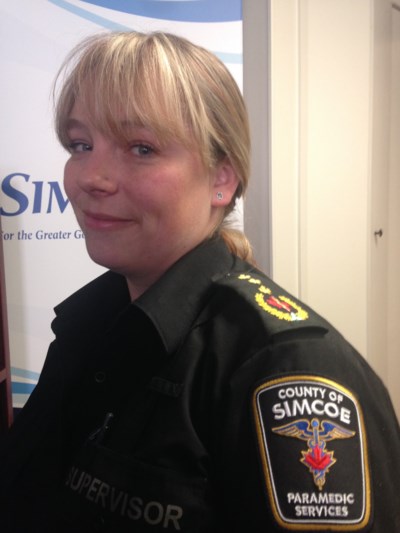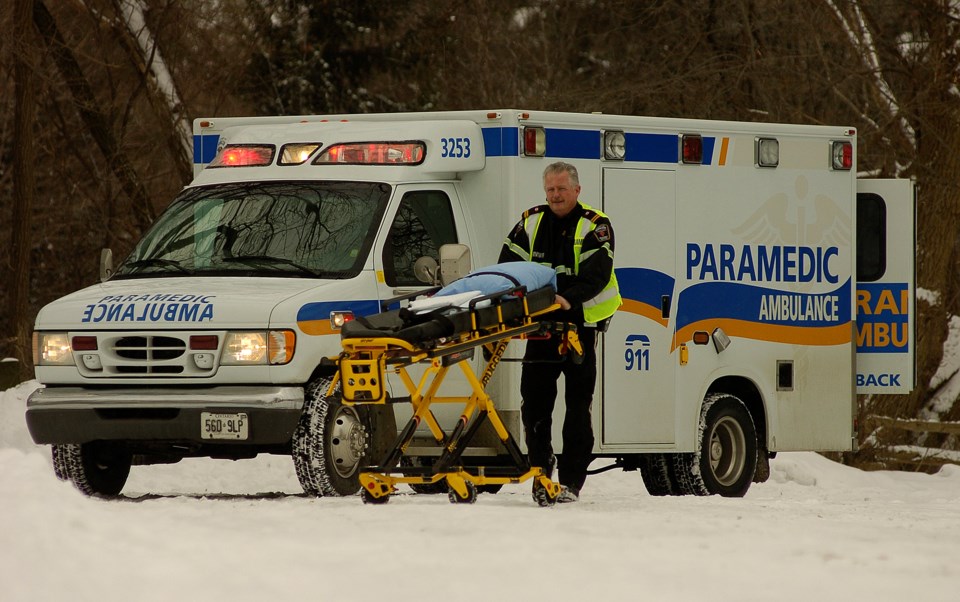The need to boost ambulance response times in Ramara has prompted Simcoe County to create a pilot program that could reduce ambulance use.
On April 18, the county launched a community paramedicine home visit pilot project, which has specially trained paramedics based out of the fire station in Brechin.
They visit patients chosen by the Couchiching Family Health Team to assist them with managing their diabetes, chronic lung disease and heart failure risks.
But more than that, notes Simcoe County Paramedic Services clinical supervisor Kristen Gilmartin, those receiving care are taught to be proactive and encouraged to access other supports that help them stay in their homes longer.
 Paramedic supervisor Kristen Gilmartin
Paramedic supervisor Kristen Gilmartin“We’re working with an elderly population that can have a number of other conditions.
"People have different support networks and different financial supports. There are a lot of other things that play into their ability to care for themselves,” she said.
“We can do the follow-up visits in between physician visits to make sure the patient is maintaining their blood sugar level or taking medications. We might recognize needs for other community supports.
Paramedics help the patients care for themselves and provide services they need.
It’s not the same for everybody.
"We could potentially identify an issue while it’s relatively minor, before it causes someone to go to Emergency. It’s a very different way of looking at health care,” Gilmartin said.
In choosing patients for the community paramedicine program, doctors consider the patient’s ambulance use – and many had called 911 for ambulance assistance at least four times last year.
So far, there are 43 patients on the roster, although there’s room for more than 50.
“The goal is to reduce their need to visit the emergency department and possibly decrease 911 calls. If we can catch issues sooner, it wouldn’t progress to the 911 (emergency stage). We help the patients proactively manage their condition.”
Gilmartin added four paramedics took further training at Centennial College in how to manage three chronic diseases – COPD, hart failure and diabetes. The paramedics can assess and checkup on patients, as well as teach them how to take their medications and perform tests, such as blood-sugar monitoring, if necessary.
“The primary goal is still to reduce the 911 response times in Ramara. It was an area that wasn’t meeting the standard.”
In January, the county added a targeted response unit in Ramara to decrease response times there. A targeted response unit’s paramedics cannot move out of their coverage area when paramedics in other areas are busy, as is the case throughout the county.
Keeping paramedics near the expansive northeastern township has already had an impact on response times, a county report noted. In January 2015, response to the highest priority calls rang in at 17 minutes and 48 seconds, but in January 2016, the time dropped to 9 minutes 11 seconds and by March, the average was 9 minutes 5 seconds.
The paramedics schedule calls to assess, then follow up, with patients in the community. If a 911 call comes in, they reschedule their home visits.
“It’s a great blend of priority emergency care in the community but providing that value-added in-between,” said Gilmartin. “It’s a completely different aspect of paramedicine, but it’s the way of the future.”



